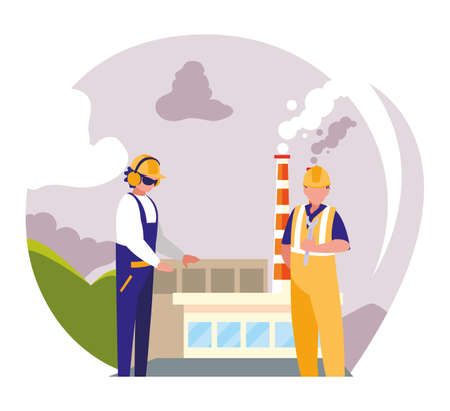Setting the Scene: Yorkshire’s Rugged Landscape
Yorkshire is no place for the faint-hearted. Here, the land rises in wild defiance—windswept moors rolling towards the horizon, rivers carving deep scars through the ancient earth, and dales that plunge steeply from ridge to valley floor. This is a landscape forged by grit and endurance, one that both challenged and beckoned those who sought to bend it to their will. In the 18th and 19th centuries, these very features became the crucible for an industrial revolution unlike any other.
From Heath to Hearth: Nature’s Relentless Power
The moors, with their heather-strewn expanses, seem timeless and untameable. Yet below those purple heights, water gathers in secretive streams before surging into rivers like the Aire, Calder and Wharfe. These waterways were anything but placid—torrential after rain, treacherous in winter, they carried not only silt and stone but also the promise of power. It was this raw energy, locked within the landscape itself, that would become Yorkshire’s most valuable currency.
Hardship as a Catalyst
Life among these hills was never easy. The weather could turn on a sixpence; fog rolling in thick as wool one minute, gales lashing stone cottages the next. For generations, Yorkshire folk eked out a living from sheep-farming and small-scale weaving—lives marked by toil and resilience. But where others saw only struggle, some saw opportunity. The very hardships imposed by this terrain would ignite innovation in those bold enough to challenge nature’s dominance.
The Spirit of Adventure Awakes
To journey through Yorkshire’s industrial past is to embark on an adventure against the odds—a tale of men and women who harnessed river currents with ingenious weirs, channelled water’s force to drive mills, and transformed fleece into fabric that would clothe a nation. The landscape did not yield easily; it demanded sweat, ingenuity, and no small measure of daring. Yet it was precisely this ruggedness that set Yorkshire apart as a powerhouse of Britain’s industrial age.
2. Birth of Mills: Wool, Weirs, and Waterwheels
If you’re itching for adventure through time, there’s nowhere quite like Yorkshire when it comes to tracing the bold origins of industrial might. Step into the roaring heart of the 18th century—when wool was king and innovation ran as wild as the rivers themselves. Yorkshire’s undulating dales and twisting waterways set the perfect stage for a revolution powered by water, muscle, and sheer grit.
Wool: The Fabric of Fortunes
The story begins with sheep dotting windswept moors, their fleeces transformed in bustling market towns from Halifax to Huddersfield. Local families spun raw wool into gold—quite literally—with Yorkshire quickly becoming a global powerhouse in textile production. Demand soared, fortunes were made, and a new breed of entrepreneurial mill-owners emerged, eager to harness nature’s energy.
Weirs & Water Management: Engineering Feats
But spinning dreams required more than ambition; it demanded ingenious manipulation of Yorkshire’s waterways. Enter the weir—a man-made barrier thrown across rivers to raise water levels and regulate flow. These structures became battlegrounds for both commerce and community pride as rival mills vied for dominance. From simple stone barrages to elaborate sluice gates, water management evolved into an art form that could make or break an empire.
Table: Key Features of Early Yorkshire Water Management
| Feature | Purpose | Impact on Mills |
|---|---|---|
| Weir | Raises river level to divert water into mill races | Ensures consistent water supply year-round |
| Sluice Gate | Controls flow and volume of water entering wheel channels | Prevents machinery damage during floods or droughts |
| Mill Race | Artificial channel guiding water directly to mill wheels | Maximises power output for machinery operation |
The Rise of Waterwheels: Powering Progress
This was no gentle country stroll—the race to build ever-bigger waterwheels was a full-blown industrial adventure. Mills sprouted along every beck and riverbank, their monstrous wooden wheels clattering day and night. Each turn brought new challenges; sabotage wasn’t unheard of as rivals fought tooth-and-nail over every drop of precious river water. Success meant prosperity not just for owners but for entire villages who depended on the thrum of industry for their livelihoods.
A Legacy Written in Water and Wool
Navigating these early chapters is no mere history lesson—it’s an extreme journey through ingenuity, fierce competition, and the relentless pursuit of progress. The echoes of those first mills still ripple through Yorkshire’s valleys today, where ruined weirs and mossy wheelhouses whisper stories of fortune, rivalry, and hard-won triumph against the elements.

3. The Mill Worker’s Grit: Life on the Edge
Step into the clogs of fearless mill workers—children, women, and men—whose hands shaped the industrial heartland. Chronicles of danger, solidarity, and day-to-day survival in the shadow of smoking chimneys.
The Relentless Rhythm of the Loom
Picture the thunder of machinery echoing through cavernous stone mills as dawn breaks over Yorkshire. Every day was a test of nerve and stamina for the workers—many barely in their teens, some as young as eight—who kept the looms humming. Their world was a blur of spinning bobbins, flying shuttles, and relentless overseers demanding unwavering attention. In these mills, time was money; every wasted second shaved pennies from a family’s meagre wage.
Children at the Coalface
The youngest hands darted between gears to clear jams or gather stray fibres—a misstep could mean mangled fingers or worse. Yet, there was no room for hesitation; poverty left no choice but to work side by side with mothers and fathers. By candlelight and gaslamp, these children grew up fast, learning resilience in the face of exhaustion and fear.
Women: Backbone of the Mill
Yorkshire’s mills thrummed with the energy of women whose deft fingers spun wool finer than any machine could manage. They juggled twelve-hour shifts with family duties at home. Camaraderie ran deep—women swapped stories and laughter while watching each other’s backs against harsh foremen and grinding monotony. It was this spirit that often sparked strikes and protests when conditions became unbearable.
Solidarity Forged in Hardship
Danger was ever-present: unguarded belts snapped without warning, lint-laden air choked lungs, and accidents were met with stoic resolve. But amidst hardship emerged a fierce sense of community. Neighbours shared crusts of bread and comforted one another after tragic mishaps. Mill workers formed friendly societies—precursors to trade unions—pooling coins for sick pay or funerals, proving that unity could thrive even in the shadow of Yorkshire’s towering smokestacks.
This was life on the industrial edge: perilous yet defiant, where every shift demanded courage and camaraderie—a legacy that still pulses through Yorkshire’s valleys today.
4. Leeds, Bradford, and Industrial Showdowns
Step into the electric heart of Yorkshire’s industrial saga—Leeds and Bradford, two titans whose rivalry crackled like static in the northern air. The streets here weren’t just cobbled; they were carved by ambition. Stuffy back-to-backs and labyrinthine ginnels gave way to vast warehouses and soaring mills, each one a monument to local ingenuity and grit. Leeds flexed its muscles as a mercantile giant, its trading halls echoing with the clamour of wool deals that reached far beyond county lines. Meanwhile, Bradford’s smoky skyline signalled its emergence as the “Wool Capital of the World”—a title won through relentless competition and innovation.
The Urban Battleground
In these cities, every alley was an artery feeding raw materials to the beating heart of progress. Mill owners vied for supremacy, their fortunes rising and falling on the fickle tides of invention and enterprise. Workers streamed from cramped terraces at dawn, fuelling machines powered by water, steam, and later electricity—each wave of technology raising the stakes higher.
Head-to-Head: Leeds vs Bradford
| City | Speciality | Signature Landmark | Cultural Legacy |
|---|---|---|---|
| Leeds | Finishing and Trading | Corn Exchange | Financial centre; textile innovation |
| Bradford | Raw Wool Processing | SALT’S MILL | Migrant melting pot; world wool capital |
The Spirit of Competition
This rivalry wasn’t just about economics—it shaped identity. Local pride ran deep, sparking everything from rugby derbies to architectural one-upmanship. Mills grew taller, warehouses grander; even civic buildings became statements of intent. The result? Two northern towns transformed into global heavyweights, their legacy stitched into every bolt of cloth exported worldwide.
5. Ghosts in the Mill: Strikes, Sabotage, and the Spirit of Resistance
The Luddite Uprising: Smashing the Future to Save the Past
Yorkshire’s industrial heart may have beaten to the thrum of water wheels and spinning jennies, but beneath the clatter, a storm of rebellion brewed. The early 1800s saw the rise of the Luddites—textile workers armed with hammers and outrage—who stalked the moors by night, smashing mechanised looms that threatened their livelihoods. These weren’t just acts of vandalism; they were desperate declarations from men and women left behind by progress. As their boots echoed down the cobbled ginnels of Leeds and Huddersfield, industry bosses shuttered windows and prayed their mills would stand another night. Here, resistance was not a whisper but a battle cry—a dare to fate and factory alike.
Strikes That Shook Stone Walls
If you thought Yorkshire folk were tough as old boots, wait till you hear about their strikes. The region’s mills became arenas for pitched battles between workers hungry for dignity and owners keen on profit margins. In 1842, the Plug Plot Riots exploded across West Yorkshire; thousands marched from Bradford to Halifax, pulling plugs from steam engines and halting production with sheer force of will. The air was thick with smoke—and defiance—as banners waved over stone bridges and picket lines snaked past terraced houses. Each strike carried risks: blacklisting, arrest, even transportation to Australia. Yet still they marched, stubborn as the Pennine winds.
Sabotage in Shadowy Corners
Sabotage wasn’t just a word—it was a lifeline for those with nothing left to lose. Under cloak of darkness, saboteurs slipped into mill yards, disabling machinery or setting fire to bales of wool. The authorities answered with spies and soldiers; mill towns bristled with tension like unshorn sheep. Every broken frame or scorched beam whispered warnings through generations—resist when all else fails.
A Legacy Etched in Grit
These uprisings were more than flashes of violence—they sparked reforms that reshaped Britain’s world of work. From child labour laws to union rights, Yorkshire’s rebels forced Parliament’s hand and rewrote the rules scrawled on factory walls. Today, as you wander beneath the looming chimneys or pause by silent weirs along the River Aire, listen for echoes: chants rising from centuries-old stones, telling tales of risk-takers who gambled everything for justice. This is no museum piece—it’s a living adventure in rebellion where every footstep follows those who dared change history.
6. Legacy on the Landscape: From Ruins to Revival
Embark on a modern expedition through Yorkshire’s surviving mill towns and you’ll discover a landscape where the ghosts of industry are anything but silent. Here, amidst the rolling dales and timeworn cobbles, the relics of water wheels and ancient stone weirs stand as living monuments—stubbornly refusing to slip quietly into the past. Each battered iron spoke or moss-clad sluice gate is more than a remnant; it’s a testament to Yorkshire’s relentless quest for progress, resilience, and reinvention.
The Mill Town Renaissance
As you wander through places like Hebden Bridge, Saltaire or Holmfirth, the old mills—once echoing with the thunder of looms—have taken on new life. Where soot once stained brickwork and clattering carts rattled over flagstones, you now find vibrant art studios, quirky cafés, and bustling market halls. The once-mighty water wheels may no longer power the textile trade, but they have been lovingly restored as centrepieces in local parks or museums, their slow spin serving as a reminder that Yorkshire’s ingenuity still turns.
Weirs: Nature Meets Heritage
The county’s weirs are another chapter in this ongoing adventure. Once engineered to harness every drop of river energy for industry, many are now reimagined as scenic beauty spots or wildlife havens. In Leeds and Bradford, you’ll find kayakers riding the very currents that powered empire; kingfishers dart between stones placed by Victorian engineers. Some weirs have even been retrofitted with modern turbines—Yorkshire grit meeting green innovation head-on, fuelling homes while preserving history.
Living History: Festivals and Community Spirit
Yorkshire’s industrial legacy isn’t just set in stone—it lives on in community spirit and celebration. Annual festivals transform former mill yards into stages for music, street food and storytelling. Guided walks trace the routes of long-vanished tramways; children play where workers once toiled. Through all this, locals fiercely protect their heritage while shaping something new—proving that these towns are not mere open-air museums but crucibles of creativity and northern soul.
From Industrial Ruin to Rural Revival
This is no tale of gentle nostalgia; it’s an extreme challenge met head-on—a region that refuses to be defined by decline. Through vision and sheer Yorkshire tenacity, ruined hulks become landmarks of revival, their stories woven into every festival banner and riverside stroll. For those who venture here today, Yorkshire offers not only echoes of wool and water power but an invitation: join the adventure of reinvention, where the past is never truly left behind.


